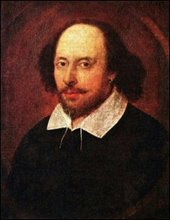
Check out the battle! This is a pivotal event in the play.
For those who were out on field trips, we read and discussed two important soliloquy's in Act IV.1. These speeches follow the long discussion about who is responsible for the sin of those who die on the battlefield. This discussion points to the importance of Henry having justified his actions via the Church - it helps motivate his men. The first soliloquy has Henry describing the weight of power, the problems of a king. Other men can sleep while the king is awake. The second is a poignant prayer that God not punish Henry for the sins of his father during this battle. This is a clear example of the theme of God and Justification and the impact of the Universal Order. In these two speeches we see the real Henry V.
The quiz scheduled for today will be postponed until tomorrow.
